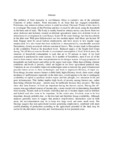Resource availability and productivity, farmer efficiency, and household food security in semi-arid Kenya
Abstract
Abstract
The problem of food insecurity in sub-Saharan Africa is currently one of the principal Concerns of policy makers. Food insecurity Is an Issue that has engaged researchers, Politicians, And donors in debate on how it could be solved. The main Theme of this thesis Is to investigate The extent of this Problem and how it could be alleviated, using the household as the basic unit of study. The Study is mainly based on primary survey data drawn from two areas (Kibwezi and Kilome), located in different agricultural zones with different levels of infrastructural development in rural Kenya. Some Of the main findings Are that households in the drier zone With poor Infrastructure use less modem inputs And labour per hectare Of land, Engage more In casual Labour employment, and have access to less regular wage employment. It is also found that food production is characterised by considerable seasonal fluctuations, closely associated with environmental factors. This, in turn, leads to fluctuations in the availability Food at the household level . Reduced supply of the Staple food Crops during The off-harvest seasons Results in constrained consumption of food. In both areas, the structure of household consumption is such that up to 50 percent or more of the food consumed is purchased in some seasons. In A number of households, most if not all of the food is from sources other than own-production in the drought season. A Large proportion of households are both buyers and sellers in the major food crops. Other than differing climatic conditions and levels of poverty, which are higher in the lower agricultural potential area, Variations in use of available improved technologies seem to indicate that good infrastructure provides better access to these technologies and leads to improved efficiency of input use. Even though in some seasons farmers exhibit fairly high efficiency levels, there exists a high incidence of inefficiencies especially in the drier area, which appears to be due to inadequate availability of capital to purchase modem inputs and hire ploughs, low education levels and poor infrastructure. This further implies high levels of poverty among farmers and, rather than being efficient but poor , farmers may be inefficient because they are poor. The data show that farm Sources of food are important during the harvest season. During the offseason, non-agricultural sources of income play a more crucial role in determining household food security. Factors such as livestock ownership and use of modem inputs such as fertiliser and hybrid seed also seem to be important. In the wetter area, livestock seem to be less important, though, probably due , to the less land and therefore forage availability. Although analyses generally seem to suggest that positive crop-livestock interactions exist in both areas, the recommendation may be to keep less large stock and more small stock. The findings suggest that non-agricultural income generating employment, combined with more careful planning of production according to the agricultural potential of the land, may be useful for the alleviation of poverty and food insecurity in low potential areas.
URI
http://hdl.handle.net/123456789/310http://erepository.uonbi.ac.ke/handle/11295/24183
https://ethos.bl.uk/OrderDetails.do?uin=uk.bl.ethos.363696
Collections
- Journal Articles (BE) [405]

